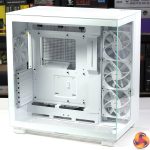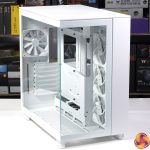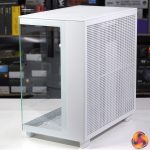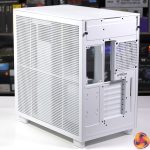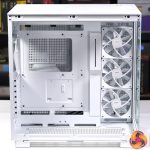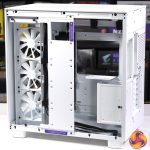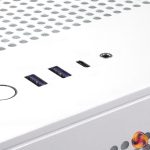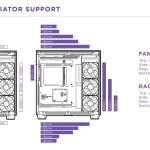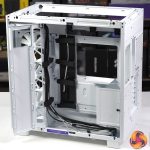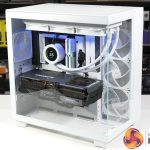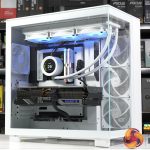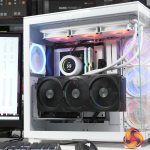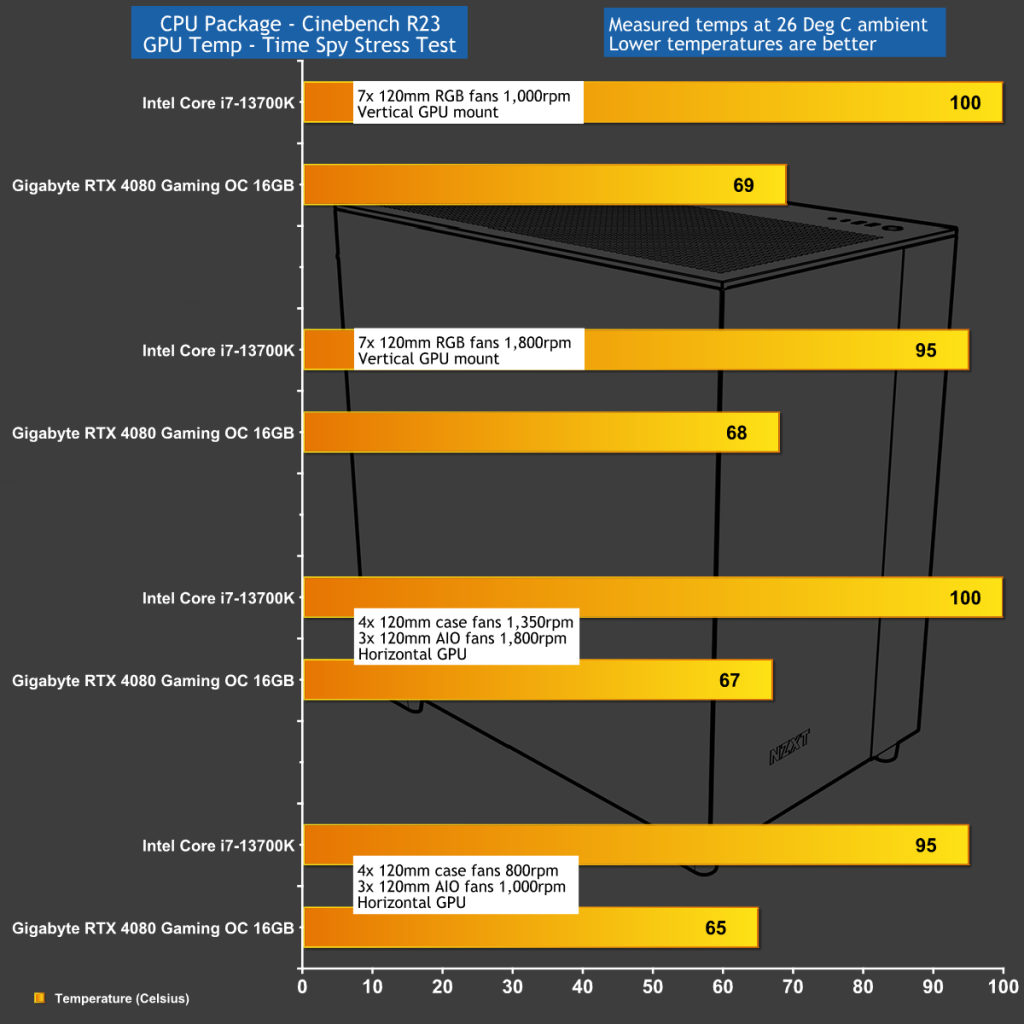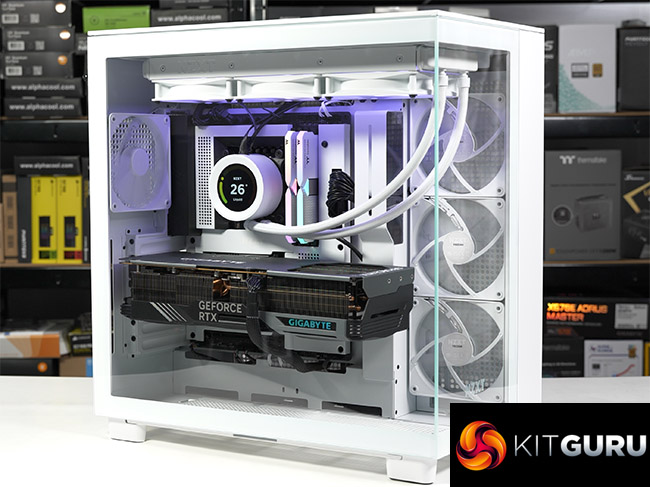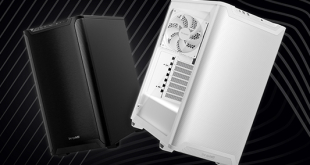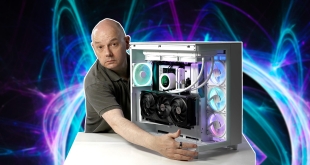
The NZXT H9 Flow is a dual chamber PC case with a correspondingly large footprint that requires a good deal of space under your desk. That much is obvious, however the bigger question is whether the ‘Flow' name is appropriate when the H9 has a large glass panel on the front and an even larger glass panel for the main window. Join us as we build a (mainly) white PC inside this eye-catching chassis.
Time stamps
00:00 Start
00:59 A closer look
02:59 Cooling support / fans
04:47 Building a PC into the Case
09:42 Does it support a massive GPU?
10:39 BIOS / software / noise levels
11:55 Adding more pretty kit !
12:47 How does it perform?
13:38 Leo’s closing thoughts
Main features:
- Unique uninterrupted glass panel for a clear view of the interior
- Intuitive cable management and dual chamber design
- Room for ten fans or three 360mm Radiators
- Perforated top panel for enhanced cooling
- Direct airflow to the GPU for handling high-powered components
- Enhanced experience with other products from the NZXT ecosystem
- Includes four F Series 120mm Quiet Airflow fans
Specification:
- Motherboard support: ATX, Micro-ATX, Mini-ITX.
- Power supply support: ATX, SFX-L, SFX.
- Expansion slots: 7.
- Included fans: 4x 120mm Quiet Airflow 1,200rpm (Case Version/DC control)
- Fan mounts: 3x 120mm side, 2x 140mm/3x 120mm roof, 2x 140mm/3x 120mm floor, 1x 120mm rear,
- Radiator mounts: 360mm side, 280mm/360mm roof, 280mm/360mm floor, 120mm rear.
- 5.25-inch optical drive bays: None.
- Internal drive bays: 2x 3.5-inch/2.5-inch, 4x 2.5-inch.
- Front I/O ports: 2x USB 3.2 Gen 1 Type-A, 1x USB 3.2 Gen 2 Type-C, audio.
- Dimensions: 495mm H x 466mm D x 290mm W.
Testing
To put this case through its cooling paces we will be using a test system consisting of an Intel Core i7-13700K, Gigabyte GeForce RTX 4080 and an SSD. This system allows us to produce a substantial amount of heat and effectively test the NZXT H9 Flow's cooling capabilities.
Test System:
- Processor: Intel Core i7-13700K
- CPU Cooler: NZXT Kraken Elite 360 RGB White
- Motherboard: NZXT N7 Z790
- Memory: 32GB Thermaltake ToughRAM XG RGB DDR5-6000
- Graphics card: Gigabyte Gaming Pro RTX 4080 16GB
- Power supply: NZXT C1200 Gold
- SSD: Sabrent Rocket 4.0 M.2 NVMe
- OS: Windows 11
Cooling Performance
Cooling Performance Overview
We are confident the NZXT H9 Flow has the potential to keep your PC hardware cool however it requires a certain amount of work. Using the side fan positions for intake is a good idea and that means you will likely install an AIO cooler in the roof. The floor can also be used for intake and while we did not test that thesis in this review we are clear in our own minds that would make a good deal of sense.
Closing Thoughts
Building a PC inside the NZXT H9 Flow is a quick and easy process. There is plenty of space and provided you take a certain amount of care around the top of the motherboard where you find the EPS connectors then all should be well. Quite why this large case is tight for space anywhere is a bit of a mystery.
It is a similar story with the minimal spacing of the main glass from the 12VHPWR connection to your graphics card and an extra 5mm of space would have made a world of difference. Having said that, it is impressive how easily you can install a stack of SSDs and HDDs around the right hand side where there is plenty of space.
In the main compartment you need to use a large graphics card and a fair sized cooler to make any sense of the NZXT H9 Flow. A custom loop build would look spectacular in this case, although an AIO cooler is the usual choice for high-end hardware. You would also get good results with a large air tower cooler on your CPU in which instance you could add even more fans in the roof of the case.
NZXT has given us plenty of options with the H9 Flow and we recommend that you let your imagination fly and really push the limits.
You can buy the NZXT H9 Flow for £169.99 from Overclockers UK HERE.
Discuss on our Facebook page HERE.
Pros:
- Mesh panels promise good airflow.
- Smart styling with glass on the front and side.
- Good support for fans and liquid coolers.
- Cable clutter can easily be hidden away.
Cons:
- Large dual chamber footprint requires lots of space.
- The four F-series fans are rather basic with DC control.
- More space required for 12VHPWR the graphics power cable.
- Radiator/fan racks in the top and side but not in the bottom.
KitGuru says: The NZXT H9 looks good and has a decent amount of space but is more about bling than performance.
 KitGuru KitGuru.net – Tech News | Hardware News | Hardware Reviews | IOS | Mobile | Gaming | Graphics Cards
KitGuru KitGuru.net – Tech News | Hardware News | Hardware Reviews | IOS | Mobile | Gaming | Graphics Cards


